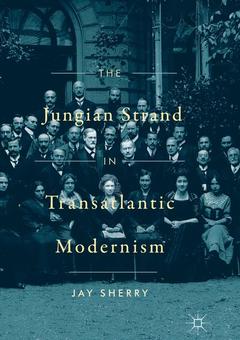Description
The Jungian Strand in Transatlantic Modernism, 1st ed. 2018
Author: Sherry Jay
Language: English
Subjects for The Jungian Strand in Transatlantic Modernism:
Publication date: 06-2018
Support: Print on demand
Support: Print on demand
Description
/li>Contents
/li>Biography
/li>Comment
/li>
In studies of psychology?s role in modernism, Carl Jung is usually relegated to a cameo appearance, if he appears at all. This book rethinks his place in modernist culture during its formative years, mapping Jung?s influence on a surprisingly vast transatlantic network of artists, writers, and thinkers. Jay Sherry sheds light on how this network grew and how Jung applied his unique view of the image-making capacity of the psyche to interpret such modernist icons as James Joyce and Pablo Picasso. His ambition to bridge the divide between the natural and human sciences resulted in a body of work that attracted a cohort of feminists and progressives involved in modern art, early childhood education, dance, and theater.
1. American Dream, Myth, Nightmare
2. Beatrice Hinkle and the New Frontiers in Mental Health
3. Cultural Ferment in Greenwich Village
4. Moving on in the '20s
5. Depression and Wartime
Jay Sherry received his PhD from Freie Universität in Berlin and currently teaches history and psychology at Long Island University, USA. His book Carl Gustav Jung: Avant-Garde Conservative (Palgrave 2010) received the Gradiva Award.
Examines the understudied influence of Carl Jung on modernist art and culture
Surveys early twentieth-century modernism, covering a wide range of figures such as Beatrice Hinkle, Eugene O’Neill, Martha Graham, and Jackson Pollack
Appeals to scholars of twentieth-century cultural history, feminist history, and Jungian thought
© 2024 LAVOISIER S.A.S.




